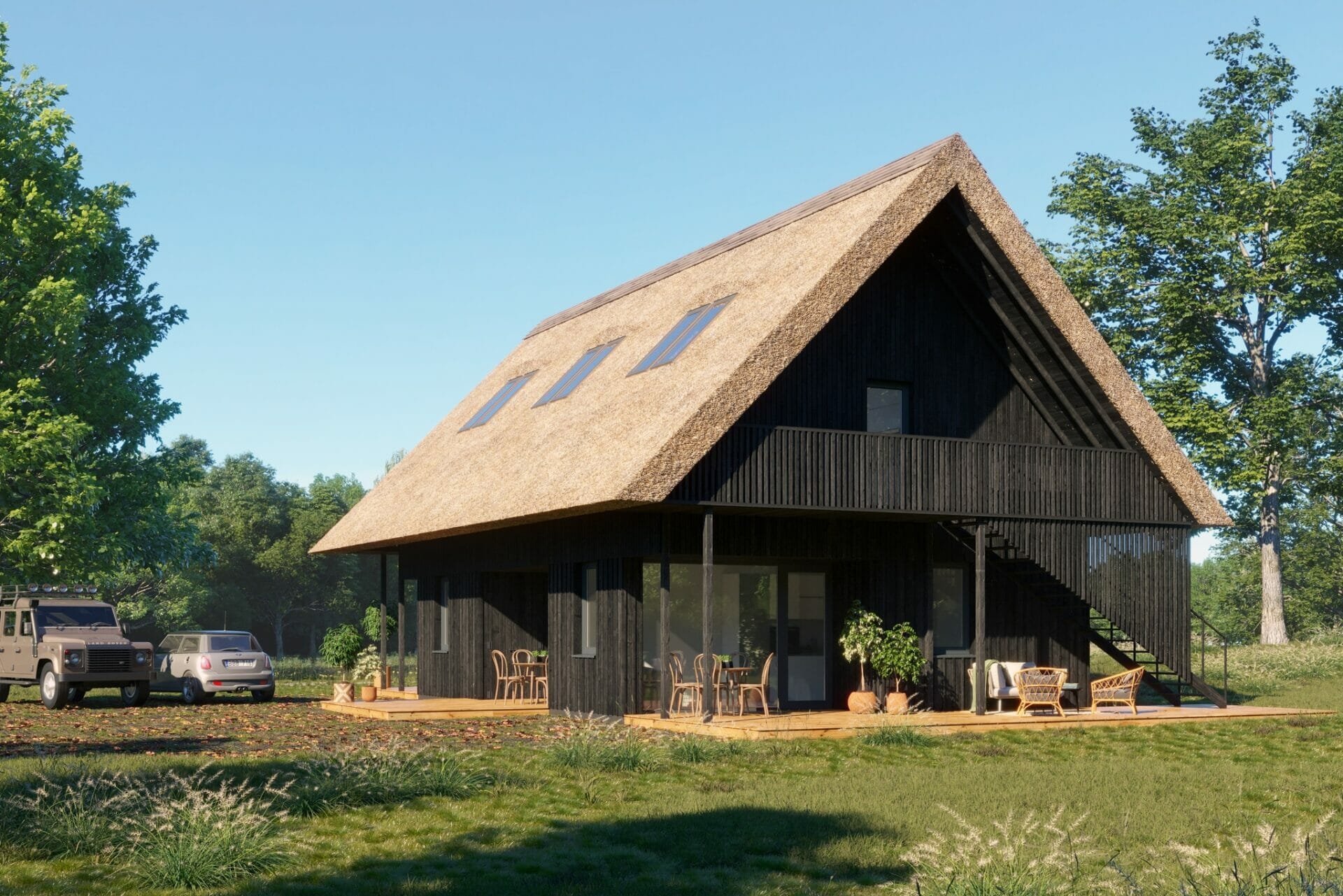These Lithuanian architects are living closer with nature
Photo is by Algirdas Bakas
Reframe had the pleasure of speaking with Šilta Šiaurė, an all-female studio in Lithuania that gained traction last year for its thatched-roof architecture. In this interview, we learn about the firm’s humble origins and how they truly live the life that they strive to design.
Tell us a little about Šilta Šiaurė, and how you got started?
We are a team of six female architects. The company started when three of us moved out from the city to a small rural town and decided to work together.
We value a slow-paced lifestyle and simple, long-lasting design. We take inspiration from vernacular architecture. Our everyday life and projects speak about a modern sustainable lifestyle outside the city.
Photo by Algirdas Bakas
“Our designs are based on our own example: we are the inhabitants of a co-housing building, we share a car and look after each other’s kids, we work in a co-working space and commute to the city by train. ”
You're one of the first architects we've interviewed. How can architects help with the environmental crisis?
Sustainability is often about reducing, simplifying, and sharing, which brings a change to most peoples’ lifestyles. This is sometimes not easy but very important to talk about with clients and developers.
An architect looks towards the future and seeks inventions; developers are often more interested in old reliable solutions. These discussions usually result in some kind of compromise. It is important to understand your role here and to be the one who steps out of what’s convenient and invites society to rethink the future.
As a studio, what do you look out for? Anything sustainable you always try to implement?
Šilta Šiaurė grounds its design ideas in its own example: we are the inhabitants of a co-housing building, we share a car and look after each other’s kids, we work in a co-working space and commute to the city by train.
We are known not only as architects but also as placemakers – running a creative community and promoting a different lifestyle. When they say it’s impossible or “people are not yet ready for that”, we say - yes, they are!
Image by Algimantas Raubiška
What are some promising technologies that you think should be adopted more broadly to further help sustainability?
At Šilta Šiaurė, we are focused to promote the use of timber in Lithuania, taking inspiration from traditional Lithuanian, Scandinavian and Japanese buildings.
Lithuania is rich with wood, and we export lots of prefabricated homes to Scandinavia. Sadly, people here consider timber structures not reliable enough and they prefer bricks. It’s very much a cultural thing – a prejudice that are trying to fight with our designs.
What are some interesting things you've read, listened to, or discovered about sustainability?
Some recent discoveries:
This exhibition by Olafur Eliasson “Life - On the coexistence of man and nature” in Basel, Switzerland at Fondation Beyeler.
This experiment by ecoLogicStudio, Bit.Bio.Bot, with micro-algae and a bio-medium gel. It demonstrates a new bio-computational design workflow that pairs algorithms and biology.
Do you have any ideas for how to get more people on board with sustainability?
We constantly search for worldwide examples of inspiring, environmentally friendly projects and share them with our followers. That’s how we promote environmental awareness and good taste among the Lithuanian public.
What can homeowners do?
It is great when a client is able to prioritize sustainability over a quick profit. For the best result, we always advise getting an architect with the same values. Then everything falls into place.




